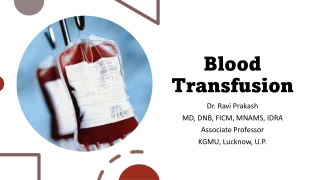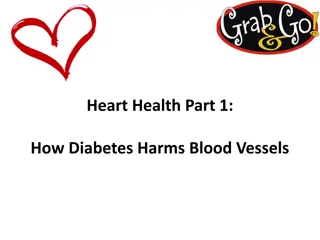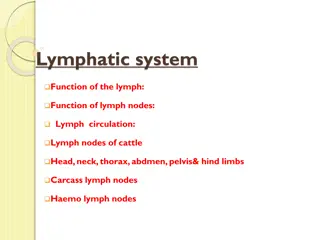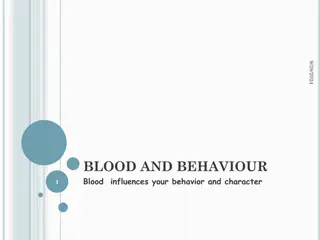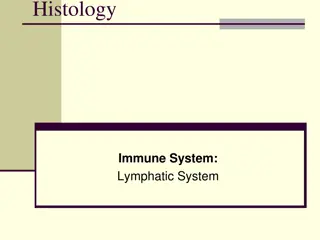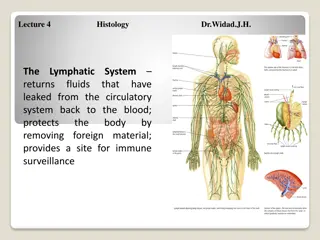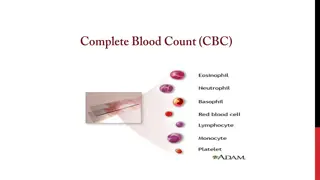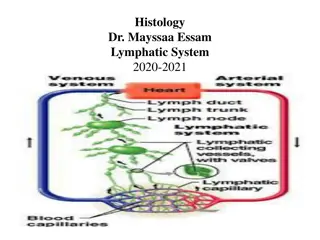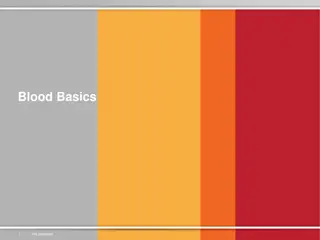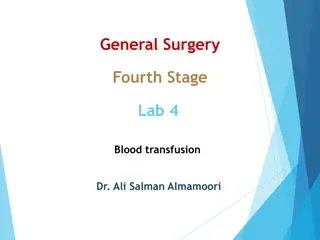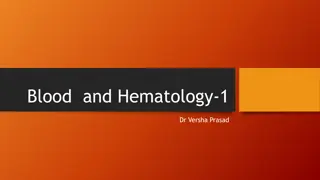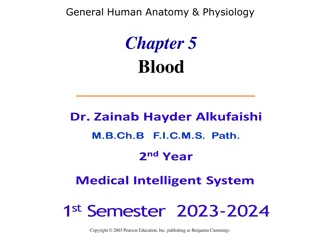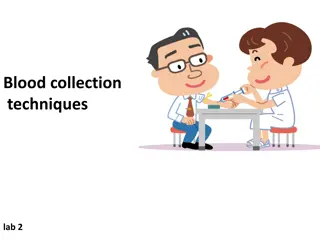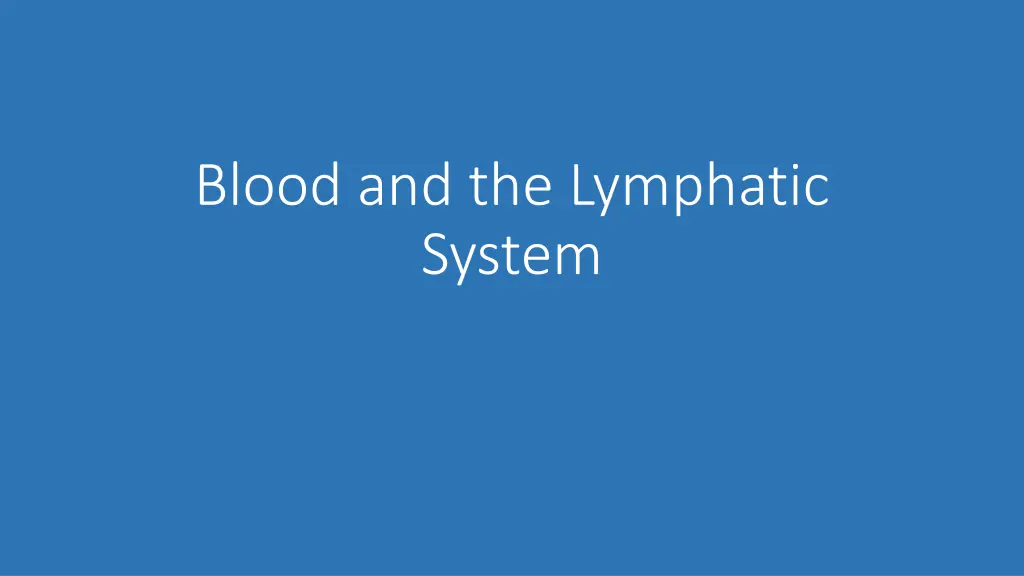
Understanding Blood and the Lymphatic System
Explore the components of blood - plasma, red and white blood cells, platelets, and the fascinating process of blood clotting. Learn about Hemophilia, a blood clotting disorder, and discover the vital role of the lymphatic system in returning lost fluid back to the circulatory system.
Download Presentation

Please find below an Image/Link to download the presentation.
The content on the website is provided AS IS for your information and personal use only. It may not be sold, licensed, or shared on other websites without obtaining consent from the author. If you encounter any issues during the download, it is possible that the publisher has removed the file from their server.
You are allowed to download the files provided on this website for personal or commercial use, subject to the condition that they are used lawfully. All files are the property of their respective owners.
The content on the website is provided AS IS for your information and personal use only. It may not be sold, licensed, or shared on other websites without obtaining consent from the author.
E N D
Presentation Transcript
Blood and the Lymphatic System
Blood Plasma The human body contains 4 6 liters of blood 45% of blood consist of cells 55% consist of plasma, the straw colored fluid
Blood Cells - Red The most numerous cells in the blood are red blood cells Function: transport oxygen Hemoglobin is the iron-containing protein that binds to oxygen They are made in the red bone marrow and are used for ~120 days They are destroyed in the liver and spleen
Blood Cells - White Like red blood cells, white blood cells are made in bone marrow Function: guard against infection, fight parasites and attack bacteria There are many types of white blood cells Lymphocytes produce antibodies that are proteins the help destroy pathogens White blood cells can leave the circulatory system to help fight infections throughout the body Your body can also increase the amount of white blood cells in your body if there is an infection that needs to be destroyed
Blood Cells Platelets and Blood Clotting We need blood in order to survive so when we get injured blood can slow or even stop us from bleeding Blood clotting is made possible by plasma proteins and cell fragments called platelets Platelets are fragments of large cells found in bone marrow that break apart and are enclosed by cell membrane. when platelets come in contact with the edges of a broken blood vessel they get very sticky and a cluster of platelets forms They then release proteins that eventually form filament which form a clott
Blood Clotting Problems Hemophilia is a genetic disorder that results from a defective protein tin the clotting pathway People who have hemophilia cannot create clots strong enough to stop even minor cuts
The Lymphatic System The lymphatic system collects the fluid that is lost by the blood and returns it back to the circulatory system The fluid is known as lymph Lymph nodes acts as filters and trap bacteria and other microorganisms that cause disease

